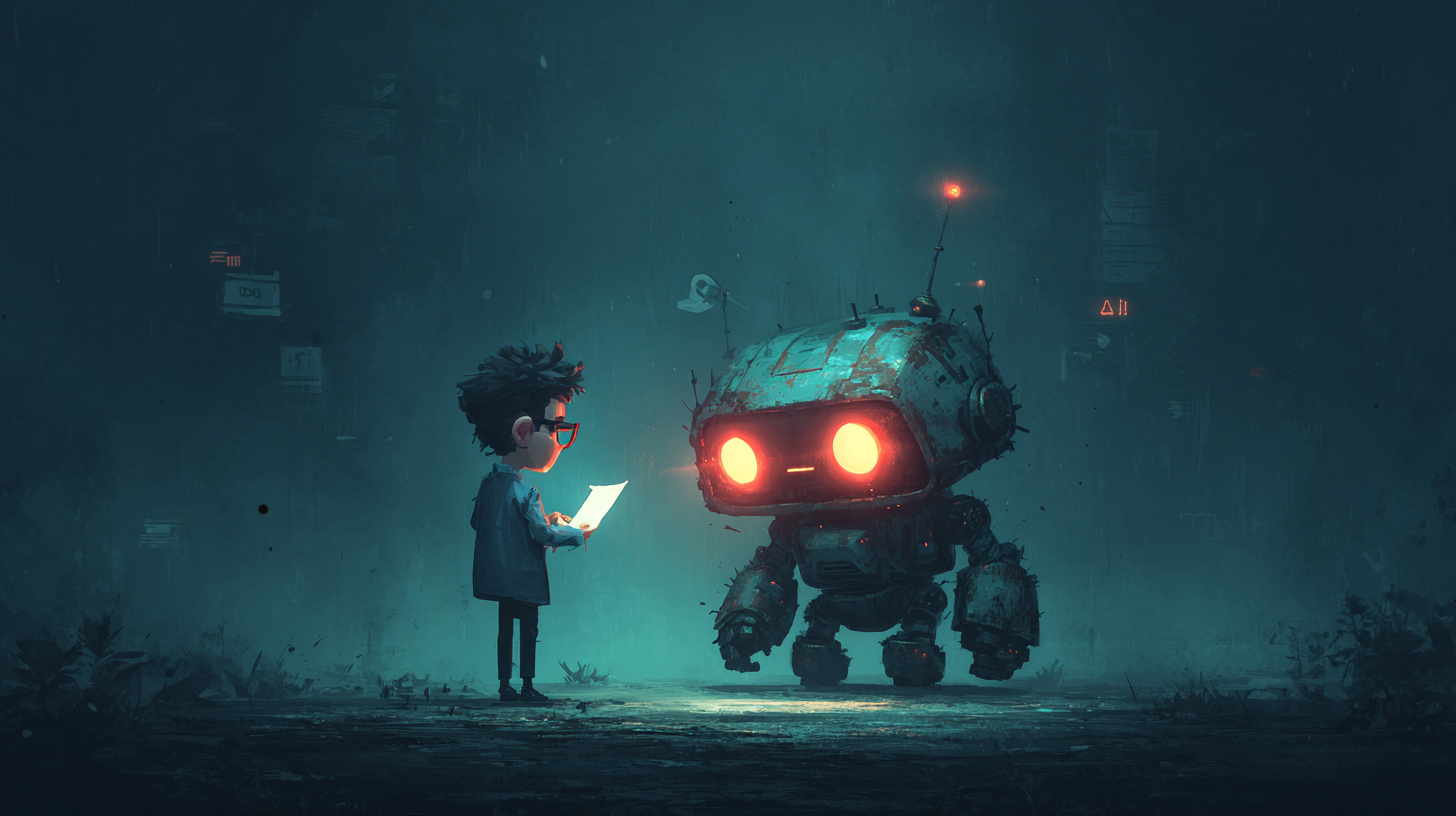Weaponizing AI: How Agencies Win Faster, Cheaper, Smarter


Marketing agencies leaning into artificial intelligence (AI) isn’t just a trend. It’s a real, practical way for agencies to ship better work faster and at a considerably lower cost. If you’re a business owner or a decision maker, you have two opposing choices: ignore it (very risky) or lean into it intelligently (very rewarding). This article was written as a clear playbook for both. What is currently working for agencies, the real risks you can’t afford to ignore, and how you can get started (or hand the reigns over to us 😁) without losing your brand’s identity or your mind in the process.
Why Should This Matter to You?
If you really believe that AI is going to take all of our jobs, then you need to flip that mentality around. AI isn’t replacing anyone (yet). However, people who effectively integrate AI into their daily workflow are definitely painting a big, red target on your back. Agencies that lean into AI and incorporate it into their processes are able to make more profitable work in a shorter amount of time, while winning over the clients who want real results right now.
How Are Agencies Seeing Real ROI?
AI is nothing more than a tool. It is not a replacement. It’s simply a new and novel way of achieving the same goals, but doing so more quickly and efficiently. Everyone was once worried that the self-checkout lanes at Walmart were going to eliminate the cashier. Nowadays there are a similar number of Walmart employees walking around those self-checkouts monitoring theft and assisting with customer service. They still have their jobs, they just look a bit different now.
Smart agencies will learn to apply these tools in a way that assists with repetitive, scalable tasks while the humans in the office get to keep on coming up with strategies, making important decisions, and keeping the company aligned with their brand’s voice.
Here are just some examples of what is delivering wins as you read this article:
- Content Production: Copywriters have learned to turn to AI for researching, organizing, and drafting outlines that a human can then edit into a final deliverable. We’re still doing the same things but cutting the time it takes to do it by 300% or more in some cases. How do you think this article was written? Sure, I could have done all the work manually, but if I can produce the exact same results in a fraction of the time, why would I? AI can cover more ground, more quickly, and you can do it with a conversational approach.
- Search Engine Optimization & Content Recycling: If you already have a library of evergreen content, why resort to creating it and putting it out there only to collect dust? Feed that YouTube video that had a ton of views into an LLM (large language model) and get nearly instantaneous summaries, keywords, meta descriptions, quotable snippets for social posting, clips for Shorts and Stories, and even entire blog posts based solely on the transcription of that one piece of over-performing content.
- Personalization: Agencies have been collecting user data and looking at behaviors and demographics for years with mixed results. Now agencies are using AI to parse and examine that data to fuel real-time profile stitching and dynamic creative to enhance click-through rates (CTRs) and deliver highly engaging and relevant experiences for their customers.
- Reporting & Documentation: We live in a time where I can show up to a meeting, set my phone on the table next to me, record the conversation, and use AI to summarize that meeting into bullet points, key takeaways, and actionable tasks. We can use AI to document processes, create indexed libraries of information using RAG (Retrieval-Augmented Generation), generate proposals, write detailed client reports and more, freeing up hours of manual, time-intensive labor that can be better spent getting shit done.
- Creative Cross-Pollination: AI tools now enable different creative specialists to venture beyond their traditional domains. Copywriters can generate images through text prompts with Midjourney, designers can produce cohesive copy to match their visuals, and marketers can create quick mock-ups without waiting for the design team. This democratization of creative skills allows for faster ideation, better collaboration, and more innovative solutions across disciplines.

Dark, cinematic office scene with a glowing teal pathway connecting desks and screens, illustrating an AI-powered workflow and human collaboration. Note: I didn’t write this caption. I asked ChatGPT to describe it for me 😎.
How Does Storm Cloud Use AI?
The examples above represent just a fraction of how AI is enhancing our ability to conceive, iterate, develop, and deliver superior results more efficiently than our competitors. We use an extension in our video editing software that allows us to trim silence, remove filler words, and animate captions all at the click of a button. This significantly decreases the amount of time it takes from hitting record to final production ready for uploading to TikTok and YouTube. We can select a layer in Photoshop and ask it to remove the background while preserving the subject of an image, reducing the time it would normally take to cutout images for dozens of ad sizes and variations. We can summarize long email threads in Gmail so we can get straight to that TL;DR when jumping into a conversation. We use Grammarly to help us catch grammatical and spelling mistakes or even suggest tone and voice adjustments for copy we write.
I recently used AI to generate meta descriptions for 843 individual blog posts during a website migration. Can you imagine the billable hours saved—both for myself and the client—by simply pasting each blog post into ChatGPT and requesting a concise summary paragraph?
We are always looking for ways to automate or expedite processes and workflows in order to ensure we are delivering the maximum amount of impact for the dollars our clients graciously provide to us in exchange for our services. However, there are a number of things that we take into consideration as potential risks and pitfalls that we try to avoid.
Risks You Cannot and Should Not Ignore (And How We Help to Mitigate Those Risks)
While I have been talking you up about all of the upsides and benefits of AI in an agency’s daily doings, and this article barely scratches the surface in that regard, there are many potential pitfalls when it comes to legality and quality of output. Some of the top things to look out for are:
- Copyright & Training Data Litigation: There have been multiple class action lawsuits filed that are still active today against major AI providers that claim because the training data used by those companies is largely based on protected intellectual property, any derivative works generated by these models potentially infringe upon the rights of the original owners of said properties.
- Plagiarism, Sycophantism & Hallucination: LLMs are not human. They are simply algorithms that use pattern matching and data processing to simulate an approximation of intelligence. AI doesn’t care if it is rephrasing copyrighted text a little too closely. It also tends to ‘hallucinate’ or make things up, often getting as close to fact or reality as it can but falling short. It also has a tendency to simply tell you what you want to hear to placate or please you for whatever reason.
- Generic, Bland Copy: Sometimes AI output just sounds boring and uninteresting. If clear enough guidance and instruction isn’t provided to an LLM they will often just deliver lists of facts that it thinks you are looking for and gives you output that is inconsistent with your brand or voice. A lot of the copy they generate can sometimes feel like it just wasn’t feeling very creative that day. Hence the need for humanized editorial control.
- Data Privacy & Personally Identifiable Information: While the companies providing these LLMs for our consumption do their due diligence in regards to privacy and security, you should always attempt to avoid using sensitive client data when training models or providing input to generative machines. There is always a risk of software breeches and data mining in enterprise and the AI industry is no exception to that rule. Hackers gonna be hackers! ☠️
However, Storm Cloud Marketing is actively mitigating these risks in many ways and your business or agency should follow our lead when it comes to your own workflows with AI. We never just run with the output. Everything we deliver is monitored and edited to ensure rights and safety are never compromised. We always strive to use tools such as Adobe Stock & Firefly since they have taken the right precautions and actions to ensure everything they offer on their platform is licensable and legally obtainable. Whenever we use research or data generated by an LLM we always ensure proper citations and transparent revelation of sources where precise information is relevant. Everything we do with AI is passed in front of a set of human eyes to ensure quality and integrity are at the forefront of our services.
Let’s Summarize the Pros & Cons
Listen, there are pros and cons to everything. As with all ventures in life and in business, we simply need to look at both and weigh the options against the alternatives. Can we save time and money leaning into AI? Absolutely! Do the risks outweigh the rewards? 🧃≥🤗 Depends on the use case and circumstance, but it mostly revolves around your own experiences and opinions. There is a light and a dark to nearly every aspect of our industry. We’re here to help you navigate those murky waters and light a beacon to lead you into the next era of marketing and advertising. Here are the main things you need to keep top-of-mind:
Pros:
- Faster time to delivery of services or assets (often 30-50% increase in productivity)
- Lower costs per asset with higher output volume
- Better personalization and measurement at scale
Cons:
- Legal and licensing exposure when relying on unlicensed data or property
- Higher risk of generic content when not monitored by human editorial controls
- Requires an upfront investment in time, tool selection, integration, and training
Ready to Arm Your Agency with AI? The Time is Now
The age of AI isn't coming, it's already here. While some agencies are still debating whether to dip their toes in the water, others are already swimming laps around their competition. The question isn't whether you should weaponize AI in your business or agency's arsenal, but rather how quickly you can integrate these tools before your competitors gain an insurmountable advantage.
At Storm Cloud, we've seen firsthand how AI transforms good agencies into great ones and great agencies into industry leaders. The tools, strategies, and risk-mitigation approaches outlined in this article aren't theoretical, they're battle-tested and ready for deployment.
So, what's your next move? Will you continue business as usual while watching others advance? Or are you ready to arm yourself with the AI weaponry that will help you win faster, cheaper, and smarter? The battlefield of marketing waits for no one, and the agencies equipping themselves today will be the victors of tomorrow.
Get started today!
Schedule your Intro Call with our team.



